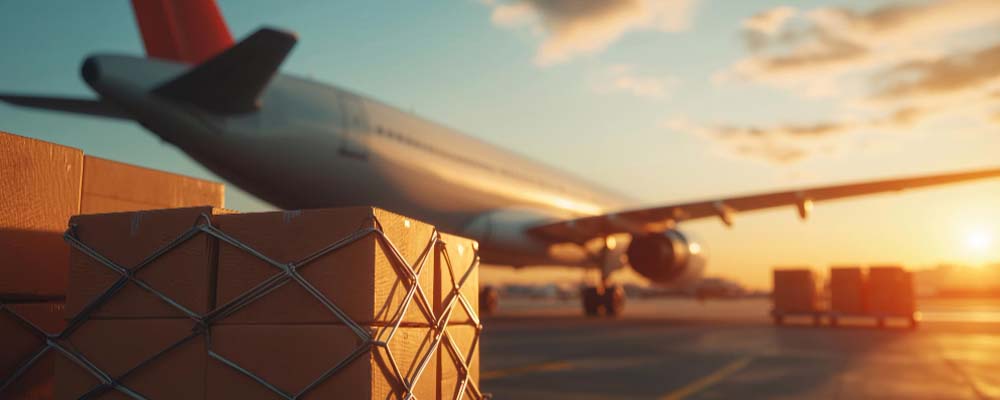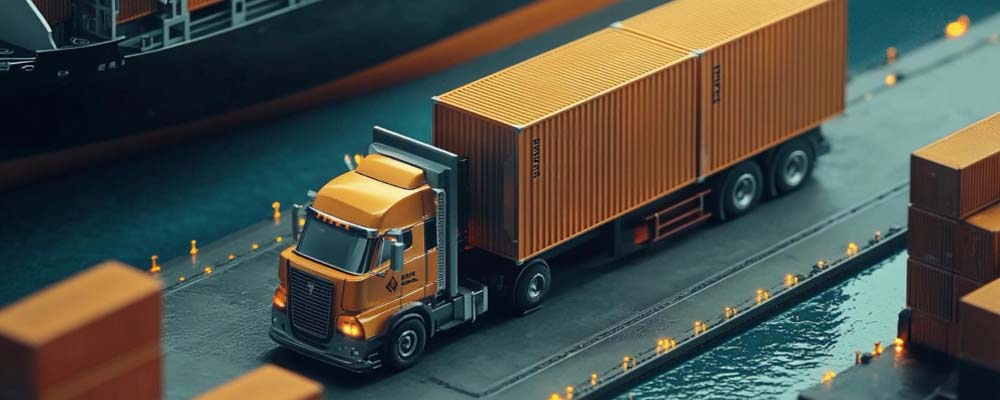
When it comes to trade in Latin America, shipping between Peru and Mexico is a vital link for businesses involved in logistics, manufacturing, and international commerce. Given that both nations hold economic significance within the region, it’s no surprise that goods frequently flow between them. For freight forwarders, customs brokers, logistics providers, and companies looking to expand their presence across Latin America, understanding the nuances of shipping between these two countries is essential.
In this guide, we’ll cover everything you need to know about shipping from Peru to Mexico, including customs requirements, available shipping options, costs, timelines, and best practices to ensure a smooth and cost-effective process.
Key Reasons for Trade Between Peru and Mexico
Trade between Peru and Mexico has been steadily growing, thanks to trade agreements like the Pacific Alliance, which includes both countries. Key exports from Peru to Mexico include minerals, agricultural products, and machinery, while Mexico exports automobiles, electronics, and food products to Peru. Businesses involved in this trade benefit from preferential tariffs under the Pacific Alliance, which simplifies customs and reduces costs.
- Economic Ties: Peru and Mexico are both significant economies in Latin America, and with the presence of robust sectors like agriculture, manufacturing, and technology, businesses have ample opportunities to establish mutually beneficial relationships.
- Demand for Raw Materials and Finished Goods: Mexico’s booming manufacturing sector relies on raw materials and minerals from Peru, while Peru imports Mexican machinery, electronics, and chemicals, making trade beneficial on both ends.
- Strategic Trade Alliances: As members of the Pacific Alliance, both countries enjoy reduced tariffs and simplified trade protocols, fostering an environment that encourages bi-directional trade.
Understanding Shipping Routes and Options
When it comes to logistics, Peru and Mexico are well-connected by both maritime and air routes. Deciding on the best shipping option depends on factors like the nature of the goods, the required delivery timeline, and budget constraints.
A. Sea Freight
Sea freight is the most popular method for shipping between Peru and Mexico. It’s economical and ideal for large shipments or goods that aren’t time-sensitive.
Popular Ports:
- Peru: Callao Port (near Lima) is Peru’s main seaport and handles the bulk of the country’s international cargo.
- Mexico: Ports like Manzanillo, Lázaro Cárdenas, and Veracruz are key entry points for cargo arriving from Peru.
Shipping Times: Depending on the chosen shipping line and route, shipments from Callao to Mexico’s main ports typically take between 10-14 days.
 B. Air Freight
B. Air Freight
Air freight is the fastest shipping option, making it ideal for high-value or perishable goods. However, it comes with a higher cost. Major airports in both countries, such as Jorge Chávez International Airport in Lima and Mexico City International Airport, facilitate regular cargo flights.
Shipping Times: Air shipments between Peru and Mexico usually take around 2-3 days, though customs processes can add a few additional days.
C. Land Transport
Land transport is not viable for direct Peru-to-Mexico shipments due to geographical constraints. However, cargo arriving by sea or air can be distributed inland using trucks and rail in both Mexico and Peru, making a multimodal approach possible.
Navigating Customs and Documentation
Navigating customs regulations is one of the most critical aspects of shipping internationally. Both Peru and Mexico have stringent customs procedures designed to ensure security and fair trade practices. Here’s what you need to know about customs clearance and required documentation.
A. Required Documentation
When shipping goods between Peru and Mexico, the following documents are typically required:
- Commercial Invoice: Lists the details of the transaction, including the goods’ value and description.
- Bill of Lading: Acts as a receipt for the shipment and contains information about the freight carrier.
- Packing List: Describes the cargo’s contents, including weight and dimensions.
- Certificate of Origin: Required under trade agreements like the Pacific Alliance to qualify for reduced tariffs.
- Import/Export Licenses: Some goods may require specific licenses depending on their nature (e.g., agricultural products).
B. Customs Clearance Process
Both countries require thorough customs inspections. Customs brokers are invaluable in ensuring that all paperwork is in order, streamlining the clearance process. Using a customs broker with experience in both countries’ systems is highly recommended, especially if the shipment involves restricted items like electronics or chemicals.
C. Duties and Taxes
Goods shipped between Mexico and Peru are often eligible for reduced tariffs thanks to the Pacific Alliance agreement. However, certain products may still incur import taxes. Checking with customs authorities or a broker ahead of time will clarify any costs.
Shipping Costs: Factors and Considerations
The cost of shipping between Peru and Mexico varies widely based on several factors. Understanding these cost determinants can help you optimize your shipping budget and make informed decisions.
A. Key Cost Factors
- Type of Freight: Air freight is generally more expensive than sea freight, given the expedited delivery timeline.
- Shipment Size and Weight: Larger and heavier shipments will naturally incur higher shipping fees. Sea freight often charges by container size, while air freight is charged based on weight.
- Incoterms: Commonly used Incoterms like FOB (Free on Board) and CIF (Cost, Insurance, and Freight) define responsibilities and costs associated with shipping. For instance, FOB means the exporter covers the cost until the goods are loaded on the vessel, while CIF covers the cost up to the destination port.
- Customs and Tariffs: Although reduced tariffs apply under the Pacific Alliance, additional fees or taxes may be applied depending on the cargo category.
- Insurance Costs: Insurance is crucial, especially for high-value or fragile items, and represents an additional expense.
B. Average Shipping Costs
- Sea Freight: Costs for a full container load (FCL) from Callao, Peru, to Manzanillo, Mexico, range between $1,500 to $2,500, depending on seasonal rates and demand.
- Air Freight: Air freight costs vary significantly but typically range from $4 to $8 per kilogram. Higher rates apply for expedited services.
Top Products Shipped Between Peru and Mexico
Understanding the types of products commonly shipped between Peru and Mexico can provide insights into market demands and the logistical requirements involved.
A. Peruvian Exports to Mexico
- Minerals and Metals: Peru is rich in natural resources, and exports include copper, gold, and silver.
- Agricultural Products: Products like coffee, asparagus, and avocados are in high demand.
- Textiles: Peruvian textiles, particularly those made of cotton and alpaca wool, are popular in Mexico.
B. Mexican Exports to Peru
- Machinery and Electronics: Mexico is a significant exporter of industrial machinery and electronic goods.
- Automotive Parts: Given Mexico’s large automotive industry, components and parts are frequently shipped to Peru.
- Food Products: Mexico exports products such as sauces, confectionery, and processed foods to Peru.
These high-demand products often benefit from streamlined customs processes and reduced tariffs, but may still face strict quality controls and regulations, especially in food and textiles.
Best Practices for Shipping Between Peru and Mexico
Efficient and cost-effective shipping between Peru and Mexico requires careful planning and adherence to best practices. Here are some tips to streamline your shipping process:
A. Partner with Experienced Freight Forwarders
Freight forwarders with experience in Latin American markets are well-versed in regional logistics, customs regulations, and potential hurdles. They can assist with everything from packaging requirements to navigating trade agreements.
B. Optimize Packaging for Cost Savings
Efficient packaging can help reduce both shipping weight and volume, resulting in lower costs. For sea freight, maximizing container space is crucial, while air freight requires minimizing weight.
C. Stay Updated on Regulatory Changes
Trade regulations between Peru and Mexico can change, especially under trade agreements like the Pacific Alliance. Staying informed about any updates in tariffs, duties, or customs regulations can prevent unexpected costs or delays.
D. Use Technology for Shipment Tracking
Modern tracking solutions help businesses monitor their shipments in real time, reducing uncertainty. These systems can also provide valuable data on shipping times and potential delays, allowing for better planning in future shipments.
Common Challenges and How to Overcome Them
While shipping between Peru and Mexico is relatively straightforward, several challenges can arise:
A. Customs Delays
Incomplete or inaccurate paperwork is a common cause of delays. Using a reputable customs broker who knows both countries’ systems is essential.
B. Unpredictable Shipping Times
Weather events and port congestion can affect shipping times. Planning shipments with a buffer for potential delays is advisable.
C. Currency Exchange Fluctuations
Since shipping costs are often quoted in USD, exchange rate volatility can impact costs. Monitoring currency trends and budgeting accordingly can help manage expenses.
Future Trends in Peru-Mexico Shipping
As trade relationships between Peru and Mexico continue to grow, several trends are shaping the future of shipping in the region:
- Digitization of Customs Processes: Both Peru and Mexico are making strides to digitize customs procedures, which will likely reduce clearance times and improve efficiency.
- Sustainability Efforts: Increasingly, logistics providers are focusing on eco-friendly practices, such as using low-emission vehicles and optimizing fuel usage.
- Expanded Trade Agreements: The Pacific Alliance may expand to include other countries, potentially opening more opportunities and further reducing tariffs for Peru-Mexico trade.
 Conclusion
Conclusion
Shipping between Peru and Mexico offers immense potential for companies across sectors, from logistics providers to manufacturers and e-commerce businesses. By understanding key factors like customs regulations, shipping options, costs, and best practices, businesses can streamline their processes and maximize efficiency. Doors of opportunity await in the Latin American market, and with the right approach, you can make the most of trade opportunities across borders.
Whether you’re shipping electronics, agricultural products, or industrial machinery, mastering the Peru-Mexico shipping route can help your business capitalize on growth in both countries. Partnering with experienced freight forwarders, staying informed on trade regulations, and using real-time tracking technology are all essential steps in navigating the complexities of this trade relationship. Expanding in a globalized world may seem daunting, but with expert guidance, it doesn’t have to be. Visit our website to learn more about simplifying your shipments between Peru, Mexico, and beyond.




 B. Air Freight
B. Air Freight
 Conclusion
Conclusion



